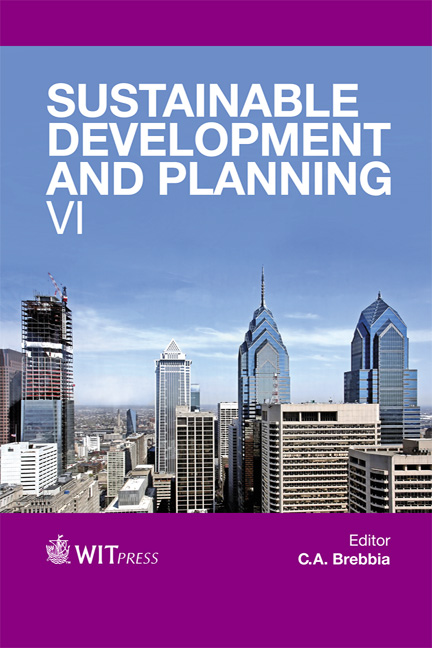Passive Zones, Bio-climatic Design And Scale Hierarchic Urban Fabric
Price
Free (open access)
Transaction
Volume
173
Pages
10
Page Range
563 - 572
Published
2013
Size
1,347 kb
Paper DOI
10.2495/SDP130471
Copyright
WIT Press
Author(s)
S. Salat, L. Bourdic
Abstract
Bioclimatic design in cities widely relies on the optimization of the interface between the city and the outside. With this in mind, passive zones are a crucial aspect of building sustainability: the zones located less than 6 meters from the façade can benefit from natural lighting, natural ventilation and passive solar gains. The passive volume ratio of an urban structure thus widely impacts on the energy requirements associated with lighting, ventilation, cooling and heating. Based on a twofold approach, this paper shows how complex urban structures with courtyards allow optimizing passive volumes ratios. Building on a geometric model, the paper shows how the passive volume ratio increases along with the scale hierarchy of courtyards within the urban fabric. A massive tower displays a passive volume ratio of 17% whereas a fabric with 3 scales Sierpinski carpet-like urban fabric displays a passive volume ratio of 100%. This geometric model is enhanced by a comparison of real urban structures. It shows that many historical urban tissues display passive volume ratios that are up to 6 times higher than in simple modernist urban fabrics. These results on passive volumes are then put in perspective with the buildings envelope/volume ratio, leading to the introduction of a climatic-dependant trade-off.
Keywords
passive zones, urban morphology, scale hierarchy, urban fabric, bio-climatic design





